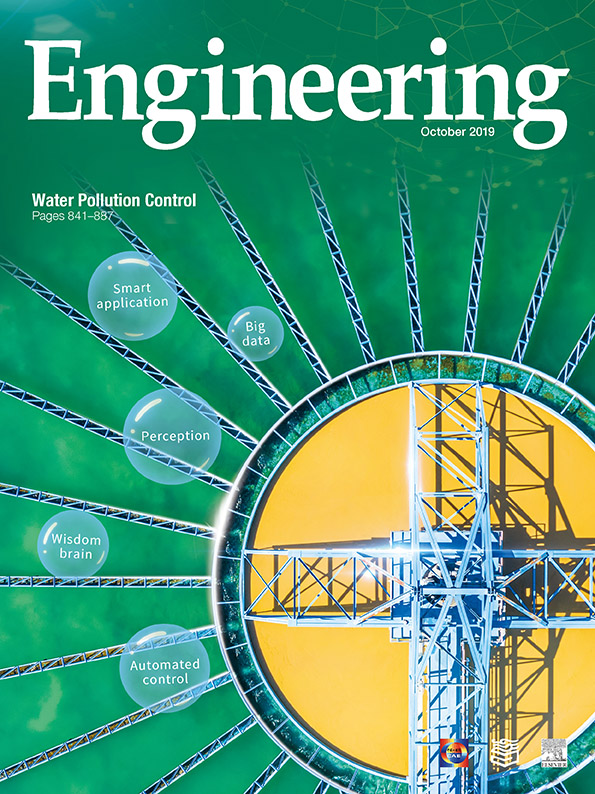
Water is the source of life, the foundation of production, and the basis of ecology; thus, protection of the water environment is vital to the interests of humanity. At present, problems related to poor quality of the water environment, damaged water ecology, and widespread potential risks are very prominent in some areas of China. These problems are not only seriously affecting the ecological environment, but also directly endangering the quality of drinking water and the health of residents. With the promotion of China’s national strategy of ecological civilization construction, as well as the increasing demands and expectations of the people regarding the quality of the water environment, water pollution control has become a major issue in China. President XI Jinping has made important statements on water treatment on many occasions, and has formed a strategic concept for water treatment in China.
Water pollution control encompasses a wide range of objectives, from ensuring the safety of drinking water to sewage treatment, from water and soil conservation to black and odorous water treatment, from pollution source control to the ecological restoration of water, and from surface water pollution control to groundwater pollution prevention. It also continuously increases and develops with the deepening of scientific research and practical needs. Water environment management and the level of water treatment technology have been significantly improved through, for example, the gradual implementation of ecological remediation technologies such as phytoremediation, and the continuous improvement of membrane materials, adsorbents, and other materials. However, water pollution control is also encountering new challenges—such as significant micro-pollution in the water environment, the widespread existence of complex pollution, and the frequent occurrence of emerging pollutants— which create a strong demand for the development of new technology, the preparation of new materials, and the application of new equipment.
In order to explore trends in engineering and technology in the field of water pollution control, and to overcome limitations on China’s water environment, water ecology, water resources, water culture, and water economy, Chinese Academy of Engineering (CAE) organized a special issue titled ‘‘Water Pollution Control.” The Editors-in-Chief of this special issue are Professor Li’an Hou from CAE and the Beijing Normal University and Professor Sergiy Melnychuk from the National University of Life and Environmental Sciences of Ukraine. The Executive Editors-in-Chief are Professor Zhifeng Yang from CAE and Professor Olaf Kolditz from the Helmholtz Center for Environmental Research (UFZ), Germany. The Editorial Members are composed of several world-renowned researchers in the field of water pollution control.
Numerous scholars were invited to write on topics within the scope of this special issue, and 22 excellent papers were submitted. Based on the selection criteria of this special issue, two rounds of peer review were organized with expert reviewers, and eight of the invited papers were selected. The authors of the selected papers are well-known academicians and scientists in the field of water pollution control from the United States, Germany, Australia, Singapore, and China. The hot topics discussed in this issue include drinking water safety, water environment management, technologies and materials for water pollution treatment, and groundwater protection.
In this issue, Professor Li’an Hou comments the construction of future waterworks, and proposes a design concept that includes modularization of the purification unit, ‘‘greening” of the purification process, the reuse of recovered material, and intelligentization of the control mode. Professor Olaf Kolditz et al. comment the application of environmental information systems in water environment management, and discuss how digitally facilitated water management (Water 4.0) is used to optimize the design of water systems. Professor Yiping Wu et al. investigate the evolution of discharge–sediment relationships on the Chinese Loess Plateau in the past decades (1960–2010), and identify a distinct change in these relationships as a result of soil- and water-conservation measures in this area. Professor Michael D. Short et al. examine the removal and fate of selected drugs of abuse in the sludge and biosolids from Australian wastewater treatment operations; furthermore, an environmental risk assessment shows that the potential environmental risks associated with the land application of biosolids are very low for typical Australian biosolids application rates. Professor Xiaoguang Meng et al. report on the use of photocatalyzed hydrogen peroxide (H2O2) oxidation experiments and chemical analyses to study the advanced oxidation process of 2,4-dinitroanisole (DNAN) using ultraviolet/hydrogen peroxide (UV/H2O2), through which nitrogen is converted to nitrate. Professor Jiangyong Hu et al. discuss plant traits that can enhance the phytoremediation of nutrient pollutants in storm water runoff, for application in bioretention systems. Professor Suiyi Zhu et al. demonstrate the green synthesis of magnetic adsorbent using groundwater treatment sludge, and converts weakly magnetized sludge into magnetic adsorbent, which has a high capacity for tetracycline adsorption. Professor Shiyuan Ding et al. report on the synthesis of a copper ferrocyanide/silica/polyvinylidene fluoride (CuFC/SiO2/PVDF) hollow-fiber composite membrane, which shows a superior cesium-removal performance in natural surface water and in simulated water with a low concentration of cesium. The research in this special issue thus provides new perspectives on and methods for water pollution control management and technology.













 京公网安备 11010502051620号
京公网安备 11010502051620号




